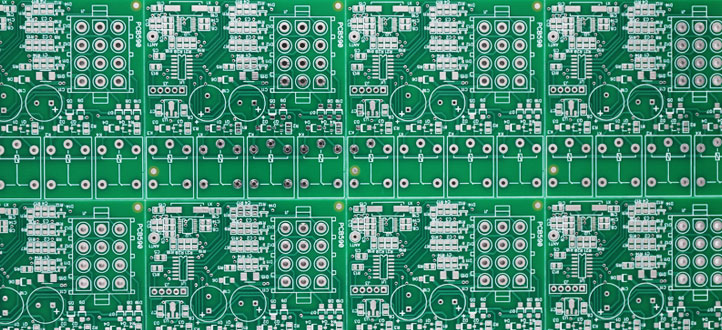What is PCB immersion tin process?

The principle and advantages of PCB immersion tin process.
The PCB immersion tin process is a method of chemically depositing tin metal coating on the copper surface. It is mainly used to improve the effect of SMT and chip packaging, and it is also a new green and environmentally friendly process. It utilizes the replacement reaction between Sn9O2 and copper to convert the copper surface into a tin layer while releasing oxygen. This reaction is carried out spontaneously without external current or catalyst, and only needs to control parameters such as temperature, time and solution concentration.
The PCB immersion tin process has the following advantages:
- The immersion tin layer is smooth, flat and dense, and it is more difficult to form copper-tin intermetallic compounds than electroplating tin, without tin whiskers;
- The thickness of the immersion tin layer can reach 0.8-1.5μm, which can withstand multiple lead-free soldering impacts;
- The solution is stable, the process is simple, and it can be used continuously through analysis and replenishment without changing the cylinder;
- Suitable for both vertical and horizontal processes;
- The cost of immersion tin is much lower than immersion nickel gold, which is equivalent to hot air leveling;
- It has obvious technical advantages for high-density boards that are easily short-circuited by tin-spraying, and is suitable for rigid and flexible boards with thin-line high-density IC packaging;
- Suitable for surface mount (SMT) or press fit (Press-fit) installation process;
- Lead-free and fluorine-free, no pollution to the environment, free recycling of waste liquid.
Main steps of PCB immersion tin process.
- Surface degreasing: Clean the PCB surface with acid degreasing agent and sulfuric acid solution to remove oil, oxide layer and fingerprints.
- Micro-etching: use Na2S2O4 and H2SO4 solutions to micro-etch the PCB surface to remove excess copper foil and increase surface roughness.
- Pre-dip: Wet the micro-etched copper surface with M901 pre-dip solution to prepare for immersion tin.
- Chemical tin: Immerse the PCB with a solution containing Sn9O2, thiourea and organic sulfonic acid to form a tin layer with a thickness of 0.8-1.5 μm.
- Post-processing: Clean the PCB after immersion tin with DI water and hot DI water to remove residual substances.
Precautions for PCB immersion tin process.
When carrying out the PCB immersion tin process, the following points need to be paid attention to:
- The surface of the PCB should be clean, dust-free, scratch-free, and oxide-free, otherwise it will affect the effect of immersion tin;
- The solution should be analyzed and replenished regularly, maintaining proper temperature, time and concentration, avoiding excess or deficiency;
- The PCB should be immersed in and taken out of the solution evenly to avoid air bubbles or unevenness;
- After sinking tin, the PCB should be cleaned and dried in time to avoid contamination or oxidation of the tin layer.
Application prospect of PCB immersion tin process in electronics industry.
The PCB immersion tin process is a new surface treatment method that meets the requirements of lead-free soldering. It has the advantages of low cost, good effect, environmental protection and no pollution, and has been widely used in the electronics industry. With the continuous upgrading of electronic products, the requirements for PCB surface treatment are getting higher and higher. PCB immersion tin technology has great development potential and market prospects.

